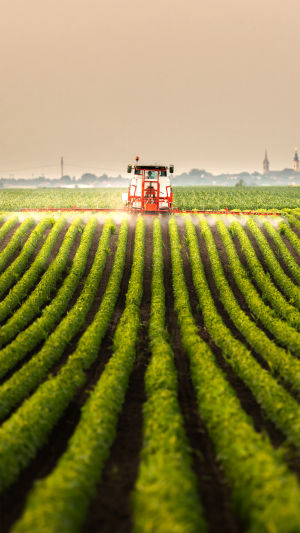In recent years, technology has brought a significant impact on agriculture. The use of drones in farming has become increasingly popular, especially in plant protection.
The traditional method of using tractors to spray pesticides has been replaced by the more advanced technology of plant protection drones. However, both methods have their advantages and disadvantages.
Tractors were originally invented to replace animals used for farm work. The American industrialist Henry Ford, one of the pioneers of the modern tractor, was inspired by the desire for a machine that could work better on the farm than a horse. Before the advent of the tractor, oxen, and horses made farming easy for farmers, but all they could do was carry things and not radically improve efficiency.
The early tractors were only a substitute for horses, so they were also basically used only to transport goods. Early tractors were powered by coal and were called steam tractors. They looked more like a small steam locomotives with large, sturdy metal wheels that could roll down the road.
Modern tractors are much more sophisticated than the early tractor-trailers and can do all sorts of things, but that's thanks to some new features that were born with the development of technology.
The tractor is used to pull and drive the operating machinery to complete various mobile operations, and can also be used as fixed operating power. A tractor consists of an engine, transmission, walking, steering, hydraulic suspension, power output, electrical instrumentation, driving and traction systems or devices.
At present, the tractor is one of the low thresholds, and very effective methods, in addition to being simple to use, the tractor itself can also be used in addition to pesticides with other agricultural tools and other roles. Therefore, the comprehensive cost of one input, practicality has certain advantages, farmers will have a lack of motivation to accept new methods.
On the other hand, plant protection drones are a more advanced and efficient method for spraying pesticides. The drone industry is limited by the farming season, with the peak season being the busy season from March to September each year.
In addition to the off-season, the drones are idle for the remaining days of the pest control season, resulting in a lack of motivation for farmers to accept new methods.
While the cost of using a plant protection drone is slightly lower than that of a tractor spraying, the tractor is more efficient in the right terrain. However, it requires higher terrain standards compared to the drone.
On the other hand, plant protection drones can utilize remote sensing technology and mimic terrain flight, resulting in fewer terrain restrictions. Moreover, drones can conserve some chemicals during the process.
Planters and entrepreneurs have said that crop growth in the early stages can be done by a tractor, but crop growth, later on, cannot. For tall plants with above-ground seedlings, more crop tractors cannot get off the ground. Drones will become indispensable after the crop grows densely.
At the same time, plant protection drones will not be limited to field crops such as rice, rape, wheat, cotton, etc. This year, the Henan Nongju plant protection drone team will continue to experiment with spraying pesticides on fruit trees, tea, and other cash crops to provide more data support for the promotion of plant protection drones in all aspects.
As we increase support for drones, plant protection drone technology will become mature and stable, and the cost of drone spraying will gradually replace the tractor to become mainstream. However, at the current situation, the tractor will remain an important plant protection machinery presence for a period of time and cannot be ignored.
Both tractors and plant protection drones have their advantages and disadvantages. Although plant protection drones are more advanced and efficient in spraying pesticides, tractors are still an important part of plant protection machinery. As technology develops, we can expect more efficient and effective methods in agriculture.





